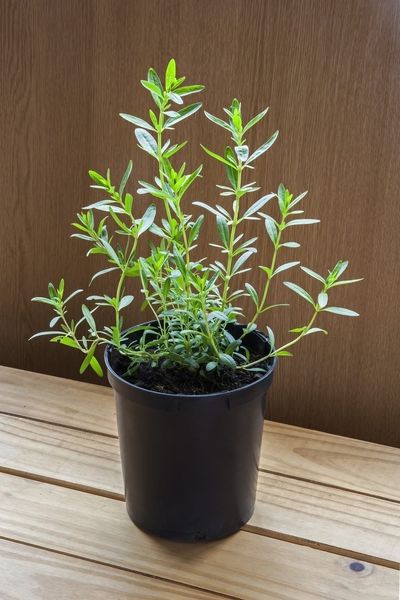Can You Grow Hyssop in Pots?
Absolutely, growing hyssop in containers is possible. Hyssop is, like many other herbs, very tolerant of a variety of environments. The herb can grow up to 2 feet (60 cm.) if left to its own devices, but it can easily be curtailed by pruning it. Hyssop’s blooms attract beneficial insects and butterflies to the garden as well.
About Growing Hyssop Plants in Containers
The name hyssop is derived from the Greek word ‘hyssopos’ and the Hebrew word ‘esob,’ meaning “holy herb.” Hyssop is a bushy, compact, upright perennial herb. Woody at its base, hyssop blooms with, most commonly, blue-violet, two-lipped blossoms on spikes in successive whorls. Hyssop can be grown in full sun to partial shade, is tolerant of drought, and prefers alkaline soil but is also tolerant of pH ranges from 5.0-7.5. Hyssop is hardy in USDA zones 3-10. In zone 6 and up, hyssop may be grown as a semi-evergreen shrub. Because hyssop is so tolerant of a variety of conditions, container grown hyssop is an easy plant to grow and is even fairly forgiving if you forget to water it now and then.
How to Grow a Hyssop Plant in a Pot
Hyssop can be started from seed indoors and transplanted or planted from nursery starts. Start seedlings indoors 8-10 weeks before the last average frost for your area. Seeds do take some time to germinate, about 14-21 days, so be patient. Transplant in the spring after the last frost. Set plants 12-24 inches (31-61 cm.) apart. Prior to planting, work some organic matter, like compost or aged animal manure, into basic potting soil. Also, sprinkle a little organic fertilizer into the hole before setting the plant and filling the hole in. Be sure that the container has adequate drainage holes. Situate the container grown hyssop in an area of full sun. Thereafter, water the plant as needed, and occasionally prune the herb and remove any dead flower heads. Use the herb fresh in herbal baths or cleansing facials. Mint-like in flavor, hyssop can also be added to green salads, soups, fruit salads, and teas. It is susceptible to very few pests and diseases and makes an excellent companion plant.
